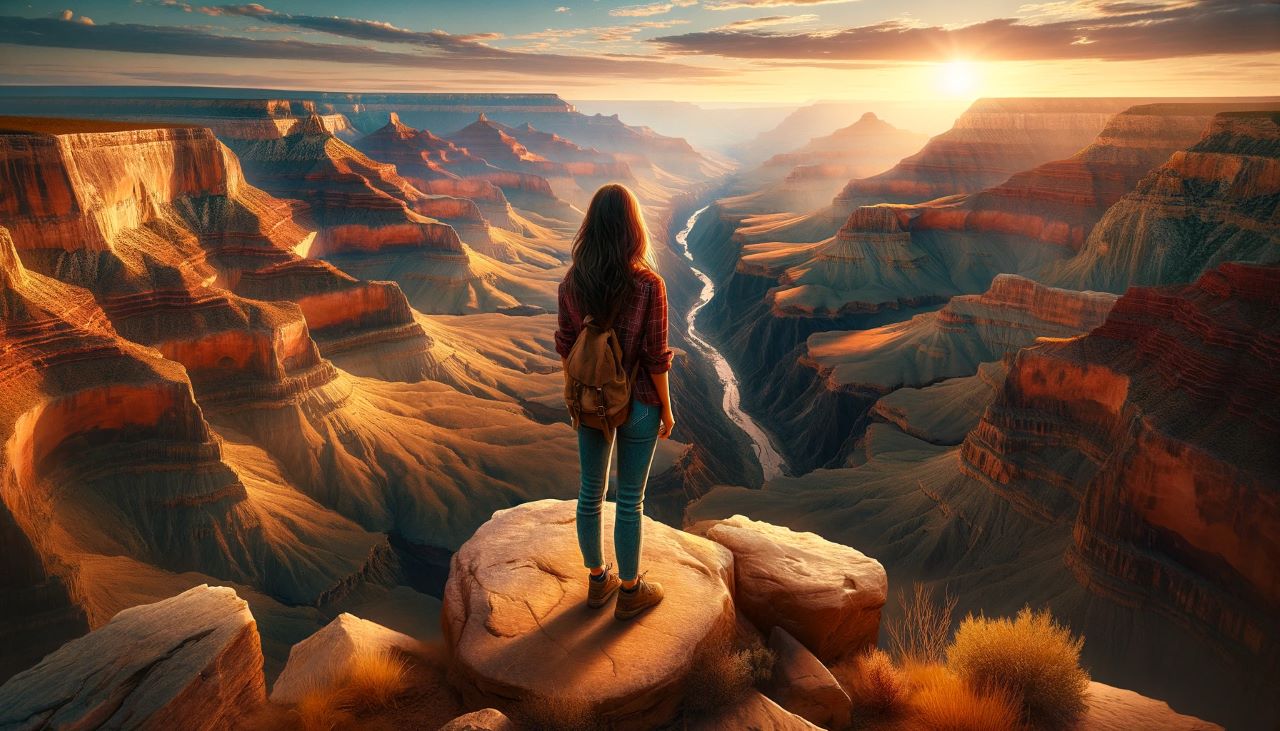Hiking in the Grand Canyon offers an unforgettable experience, blending physical challenge with a journey through geological time. The Grand Canyon, one of the world’s most renowned natural wonders, presents a unique landscape sculpted over millions of years. This article explores the geological wonder of the Grand Canyon, offering insights for both avid hikers and those new to this majestic landscape.
Exploring the Geological Timeline
The Grand Canyon is like a natural museum of Earth’s geological history. The layers of rock exposed in the canyon walls represent different geological epochs, some dating back as far as 1.2 billion years. As you hike through the various trails, you’re literally walking through time. The Vishnu Basement Rocks at the bottom of the canyon are among the oldest exposed rocks on Earth. Above these, the Grand Canyon Supergroup layers offer a glimpse into the Proterozoic era. The vibrant color bands, from deep reds to soft greens, result from different types of rocks and minerals, including limestone, sandstone, and shale.
The Dynamic Colorado River
The Colorado River, which snakes through the canyon, is a key architect of this geological masterpiece. Over millions of years, the river has carved and shaped the landscape, creating the canyon’s depth and unique formations. This relentless natural process is a powerful reminder of nature’s ability to sculpt and transform landscapes over time. Hiking alongside or rafting on the Colorado River provides a different perspective of the canyon’s scale and beauty.
Biodiversity Amidst Rocks
Despite its rocky terrain, the Grand Canyon is home to a surprising array of flora and fauna. The diverse ecosystems within the canyon range from desert scrub near the rim to riparian communities along the river. This diversity is attributed to the varying elevations and microclimates within the canyon. Hikers can spot a range of wildlife, from mule deer and California condors to a variety of reptiles and small mammals.
Hiking Trails and Safety
The Grand Canyon offers trails for all experience levels, from the challenging Bright Angel and North Kaibab trails to more accessible paths like the Rim Trail. Each trail provides a unique perspective of the canyon’s grandeur. However, hiking in the Grand Canyon can be challenging and requires preparation. The arid climate, steep trails, and elevation changes call for adequate water, proper footwear, and an understanding of one’s physical limits.
Preserving the Natural Beauty
As a UNESCO World Heritage Site, the Grand Canyon is not just a national treasure but a global one. Efforts to preserve its natural and cultural resources are crucial. Visitors play a vital role in this by adhering to park regulations, staying on designated trails, and practicing Leave No Trace principles. By respecting this majestic landscape, we ensure that future generations can also experience its timeless beauty.
Reflecting on the Grandeur
In conclusion, hiking in the Grand Canyon is more than a physical journey; it’s an exploration of Earth’s past, a testament to the power of natural forces, and a chance to connect with nature at its most awe-inspiring. Whether you’re gazing at the sunset from the rim, trekking down to the Colorado River, or observing the diverse wildlife, the Grand Canyon leaves an indelible impression of wonder and respect for our planet’s history and beauty.
To visually capture the essence of hiking in the Grand Canyon, let’s create an image that complements the grandeur and wonder of this geological marvel. The image will feature a female hiker gazing into the vast expanse of the canyon, her face turned towards the viewer, symbolizing the awe and connection people feel with this natural wonder. This image, akin to a photograph-like painting in a 16:9 ratio, will reflect the beauty, scale, and human interaction with the Grand Canyon.




